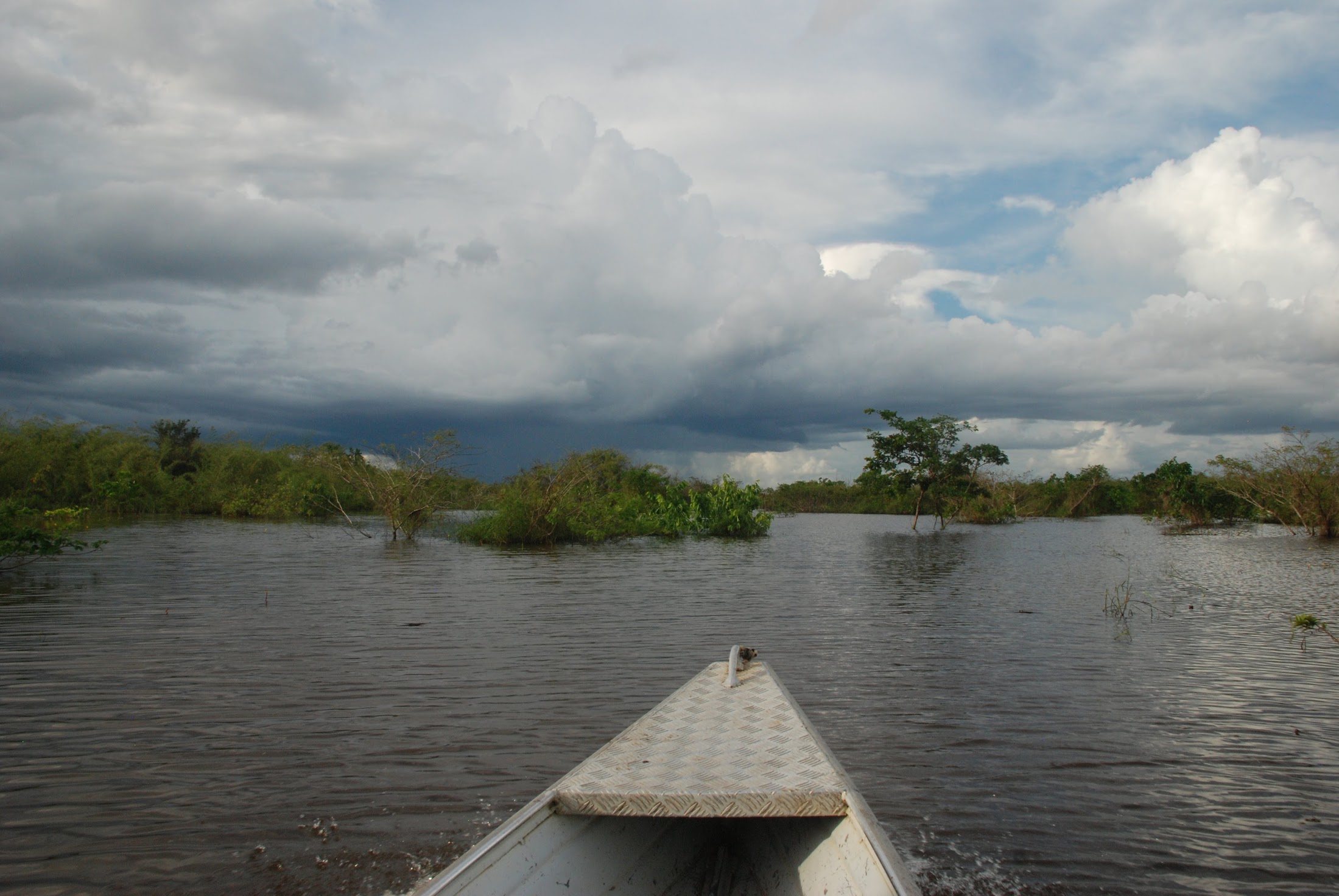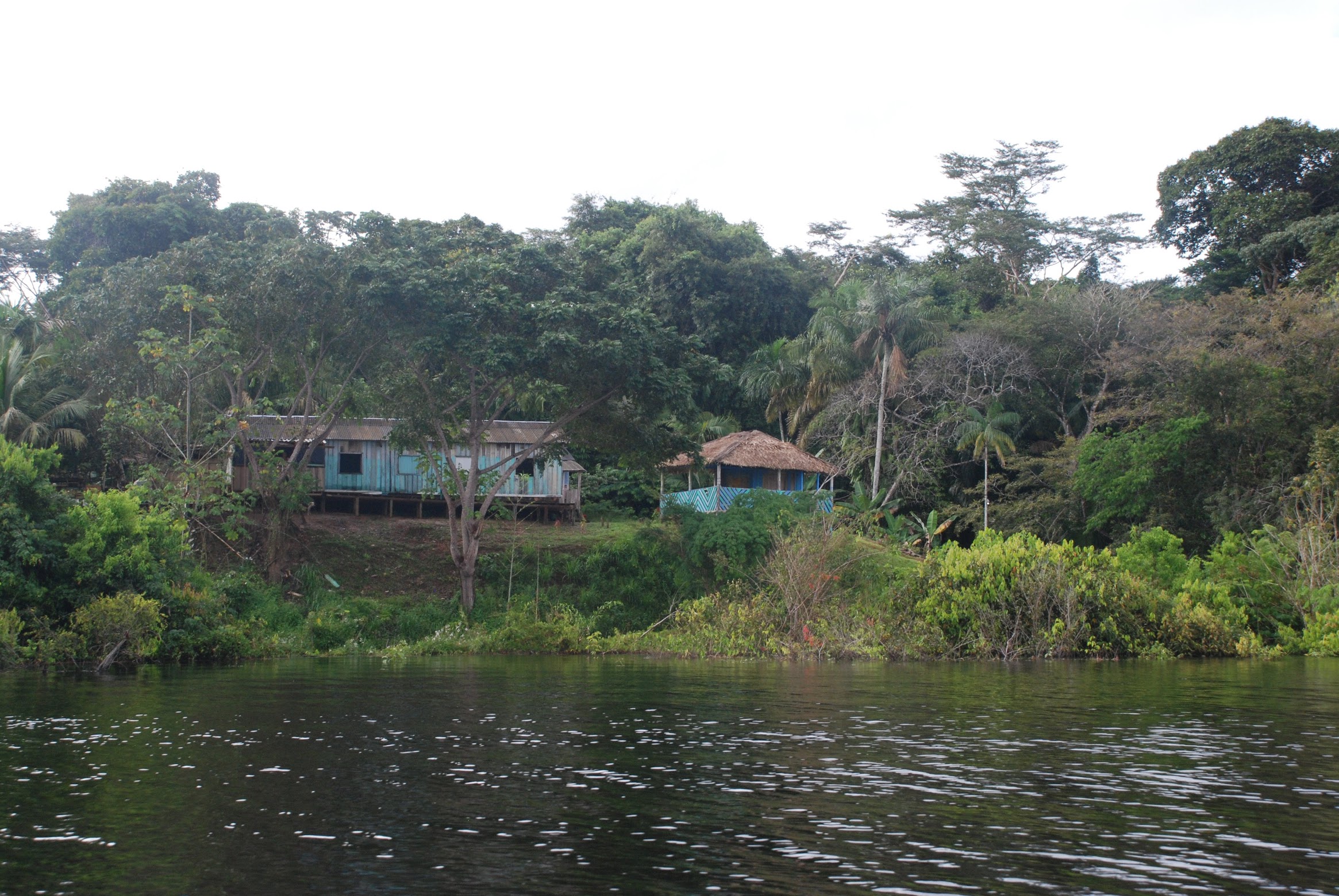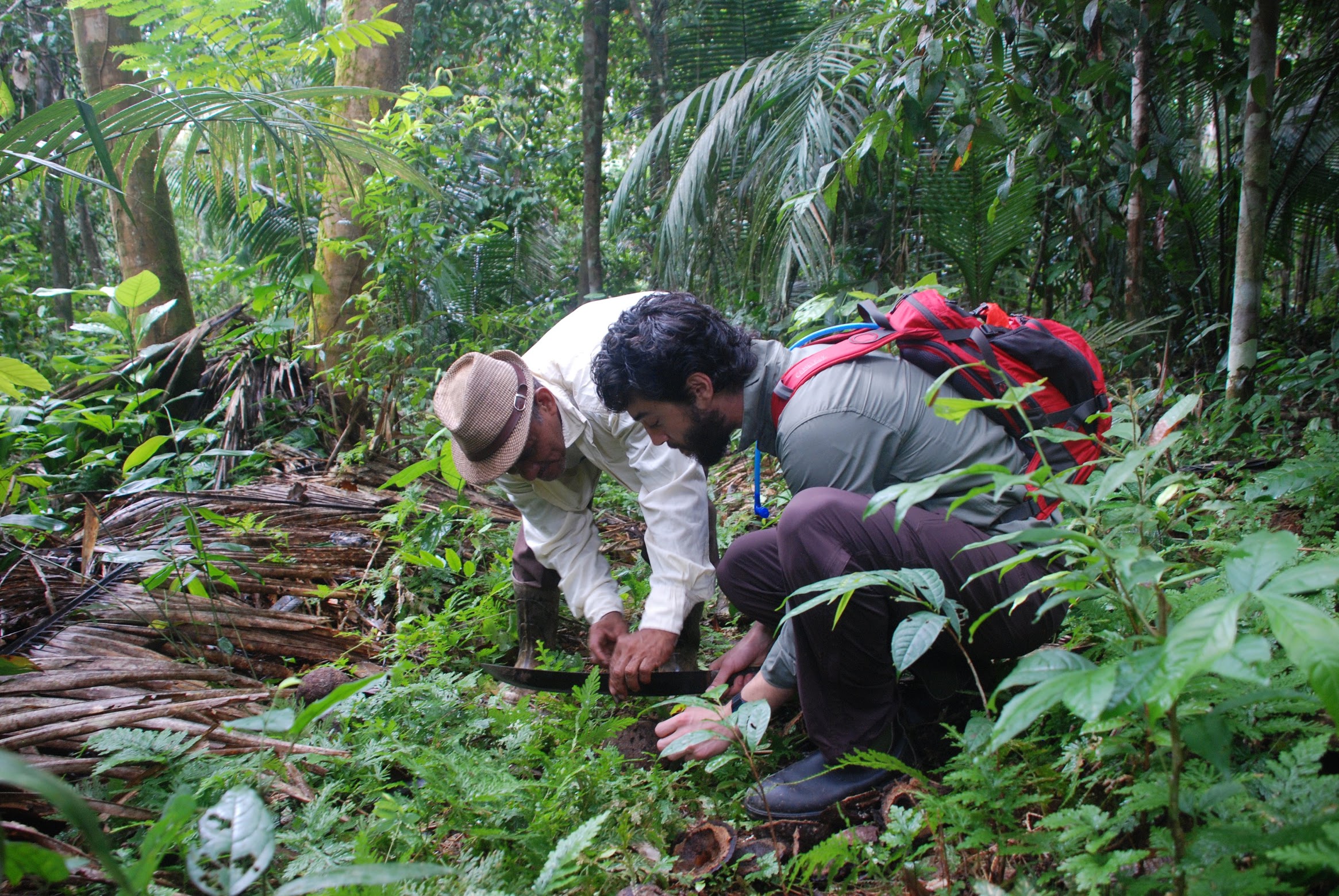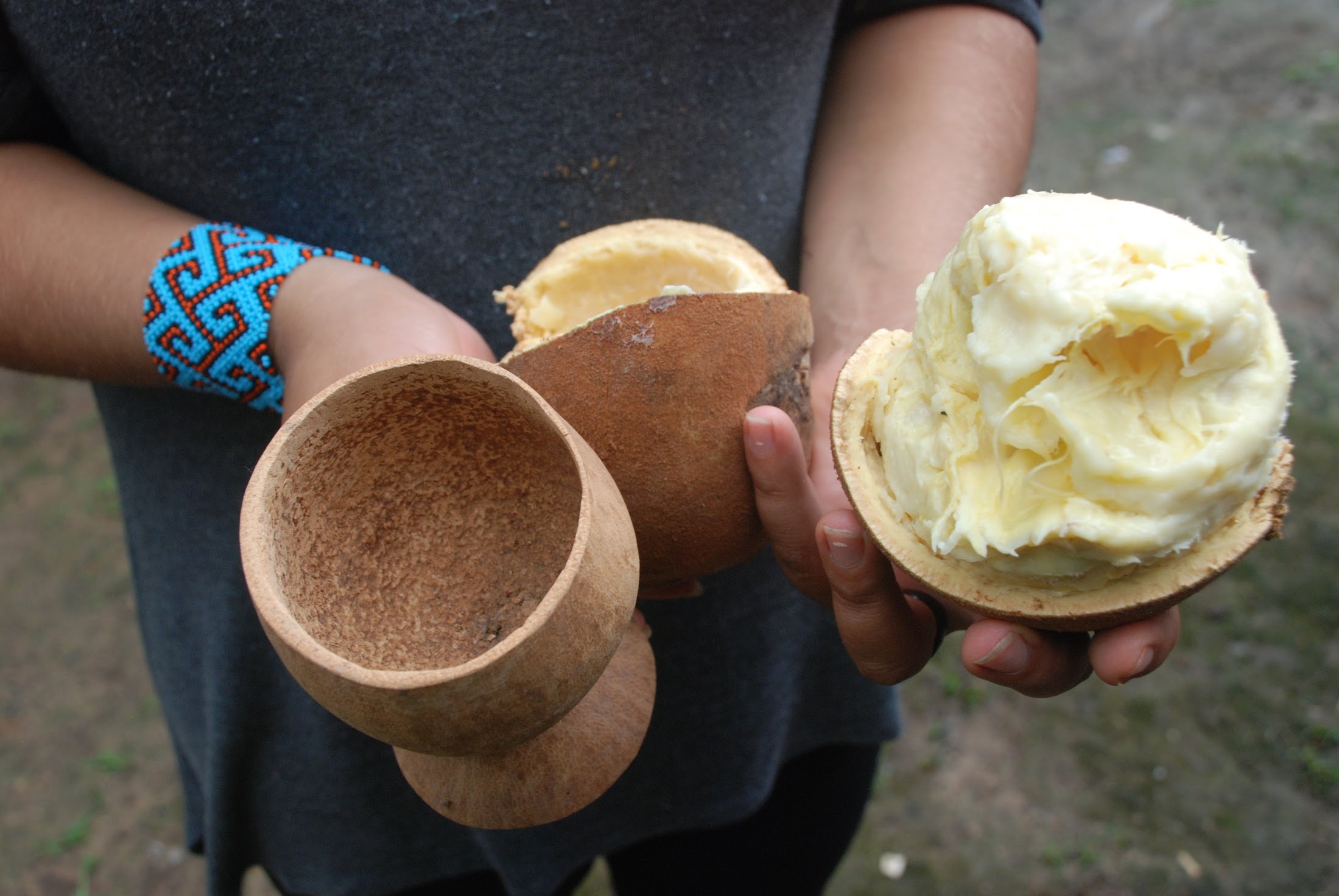It’s late afternoon, and the sun is peaking through a gap in the clouds that loom overhead. I’m hunched over my knees in a small metal rowboat (Figure 1), the latest in a series of body postures I’ve assumed in the hope of making myself more comfortable. With me is my friend Helena—a Brazilian who works for NAPRA, the Support Center for the Riverside Populations of the Amazon—her colleague Bruna, and the two community members who picked us up in a nearby town. Our destination is Cuñia Lake, in the north of the Brazilian state of Rondônia, home to an agroforestry-based community. With funds through a federal exchange program* I spent a week at Cuñia in April 2018, supporting the agroforestry activities that sustain the community with the hope of shedding new light on my work at Rural Action with forest landowners in Appalachian Ohio.

NAPRA has worked since 1993 to support the sustainable development, health, and education of rural ribeirinhos, or “riverside settlers,” living outside of Rondônia’s capitol city of Porto Velho. The Cuñia community is one such group, made up of 80 families living in seven settlements along the lakeshore (Figure 2). When I asked why the lake’s residents didn’t all live in one place, Helena explained that as each family uses the forest for food and building materials, spreading out was necessary to assure that resources remained abundant. This measured reliance on the natural environment is one of the defining characteristics of ribeirinha communities living alongside the Amazon and its tributaries, and Cuñia is no exception; its settlements have long lived off the land, with sustainable aquatic and terrestrial forest extraction an integral part of their livelihoods (Diegues 2002).

Geographic isolation drives the practice of agroforestry in the Cuñia Lake community. The village is located 40 miles from the city of Porto Velho, but navigating between the two is no small task. First, there’s the four-hour commercial boat ride down the Madeira River, one of the Amazon’s major tributaries; next, a hike through the town of São Carlos, a kilometer or more; and then comes the final leg—arranged in advance—winding for two hours through an inundated forest canopy on a puttering, diesel-powered rowboat. For the lake’s residents, a trip to the city to shop at a real grocery store, do laundry, or visit a doctor may only happen a handful of times a year.
In the absence of formal employment and markets for staple foods, the residents of Cuñia harvest Brazil nuts, açaí berries, and cacao fruit; hunt wild boar, dog-sized rodents, and alligator; fish the lake’s diverse waters; and grow and process cassava root into countless forms. Other non-timber forest products include copaíba, andiroba, breu branco, pariparoba, and babaçu, all used as food, to process into juice or oil, or to produce handicrafts such as cups and bowls.

Generational stewardship of the land within ribeirinha communities has led to an accumulation of “important knowledge on aspects of wildlife, the forest flora, use of medicinal plants…and water courses” (Ribeiro et al. 2017). During my time in Cuñia this familiarity with the landscape was apparent, evidenced in the conversations I had with residents about local flora, fauna, and agricultural systems.
At Rural Action we think of this faculty as “place-based knowledge,” a manifestation of a deep understanding and close relationship with the land. In our work with forest landowners in Appalachia—a region born in geographic isolation, with deep traditions of forest-centered livelihoods, plant-based folk medicine, and agroforestry (Light 2008)—we draw on this place-based knowledge to inform the agroforestry practices we help landowners adopt, from the cultivation of medicinal herbs like American ginseng to maple syrup production and more. Our educational approach emphasizes peer-to-peer learning and relationship building; the expertise we draw on exists within the communities we serve. This development philosophy is perfectly embodied by this “basic principle” on which NAPRA bases all of its work: that “the residents of the communities [we support] must be protagonists of [our] projects, exercising their conditions [as] agents and engaging in the construction of their own future” (NAPRA napra.org.br/o-napra/).

*Travel funds provided by the Partnering for Stronger Communities Grants Program, funded by the United States Government’s Bureau of Educational and Cultural Affairs of the U.S. Department of State and implemented by IREX.
References
Diegues ACS (2002) O Mito Moderno Da Natureza Intocada. Hucitec, São Paulo
Light PD (2008) A history of Southern and Appalachian folk medicine. Journal of the American Herbalists Guild 8:27-38.
NAPRA (2018) Napra: ‘About Us’. http://napra.org.br/o-napra/. Accessed June 28 2018
Ribeiro RV et al. (2017) Ethnobotanical study of medicinal plants used by ribeirinhos in the North Araguaia Microregion, Mato Grosso, Brazil. Journal of Ethnopharmacology 205:69-102. doi: 10.1016/j.jep.2017.04.023.

